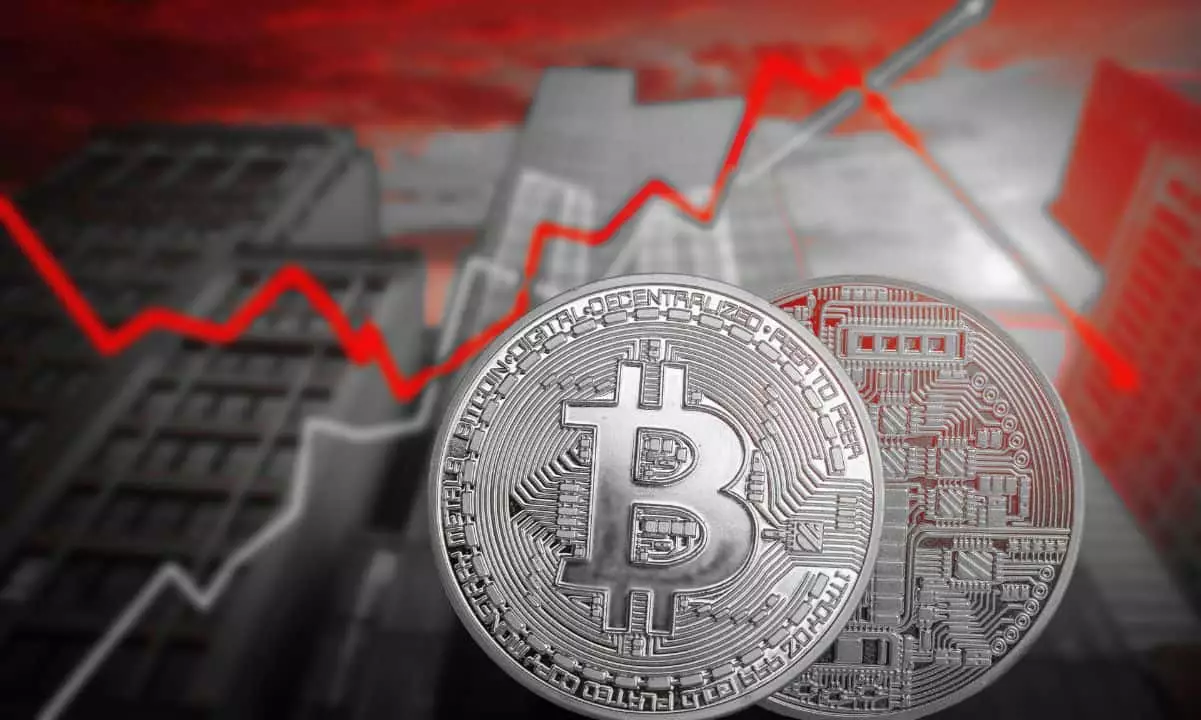In 2025, we are witnessing a seismic shift in the economic landscape, primarily driven by President Trump’s new import tariffs. These measures have sparked not merely geopolitical strife, but significant market shifts that many investors might find bewildering. Previously regarded as a bastion of financial freedom and erratic growth, the Bitcoin market is now entangled in the broader swings of trade policies and macroeconomic indicators. The recent findings from Binance Research shed crucial light on how Bitcoin’s behavior is increasingly dictated by external economic pressures—something that contradicts its foundational promise of independence from traditional finance.
Bitcoin’s Unpredictable Correlation with Traditional Assets
A striking aspect of this evolving scenario is Bitcoin’s new correlation profile with traditional asset classes. The first quarter of 2025 has laid bare the once-undisputed uniqueness of cryptocurrencies. As trade tensions escalated, Bitcoin’s correlation with equities turned negative, dropping to -0.32 by February 20. However, as fear and uncertainty persisted, this correlation surprisingly shifted back to positive territory, peaking at 0.47 by March. Such volatility raises serious questions about whether Bitcoin can maintain its supposed role as a decentralized currency insulated from the whims of political powers and trade negotiations.
Instead, it seems Bitcoin is being forced to play a dual role. On the one hand, it maintains its identity as a kind of “digital gold” but is increasingly reflecting the risk sentiment that governs the stock market. The traditional theory underpinning Bitcoin as an alternative asset is crumbling under the weight of external stressors, ultimately suggesting that while Bitcoin may serve as a hedge, it is hardly immune to the disruptions caused by geopolitical events.
Long-Term Holders and the Question of Faith
Despite the tumultuous shifts in correlation, the behavior of long-term Bitcoin holders tells a different story. Many continue to exhibit unwavering confidence in Bitcoin’s value, even amid uncertainty. This steadfastness could be interpreted as a collective acknowledgment that Bitcoin, unlike conventional assets, possesses intrinsic value rooted in its decentralized nature. However, skepticism remains about whether this belief will stand the test of a less predictable trading environment fostered by persistent inflation and economic volatility.
On a fundamental level, this resilience is a double-edged sword. If Bitcoin manages to maintain its vitality in the face of protectionist policies, it may once again be viewed as a safe haven asset—a beacon in dark financial waters. Conversely, should Bitcoin continue to mimic equity performance, it risks losing its identity, relegating it to merely another asset among many in an increasingly manipulated market.
Macroeconomic Forces: The Game-Changer
To truly navigate this minefield, we must consider macroeconomic forces that influence both traditional and crypto markets. The Federal Reserve holds a pivotal role here; with inflationary pressures mounting and interest rates poised for potential reductions, Bitcoin may find itself at a crossroads. Will it be positioned as an inflationary hedge, or will its correlation with standard equities dominate market behavior?
The crux of the matter lies in the power of these macroeconomic indicators to redefine Bitcoin’s future trajectory. If the Federal Reserve eases its monetary policy in tandem with continuing inflation, Bitcoin could reaffirm its status as a non-sovereign asset. However, should the data indicate a prolonged battle with economic uncertainty, the cryptocurrency’s rebranding from a safe haven to a mere speculative asset grows ever stronger.
The Road Ahead: Navigating Axios of Trade and Crypto
As we look forward to the broader implications of 2025’s trade wars and tariffs, investors in the crypto market face considerable hurdles. They must develop strategies that account for macroeconomic fluctuations, protected trade barriers, and central bank policies. The era of carefree crypto trading led by optimistic projections has evaporated; we are now faced with the harsher realities of geopolitics and economic backlash.
Whether Bitcoin emerges from this turmoil reinforced or further compromised will depend critically on how it contends with these impending challenges. Will it evolve into an inflation-resistant asset, or will it remain shackled to the same forces that govern traditional stocks? Each trajectory holds with it profound implications not just for investors, but for the very nature of the cryptocurrency itself. As the world turns its gaze to the future, only time will reveal Bitcoin’s ultimate fate amid a complex interplay of global economic forces.















Leave a Reply